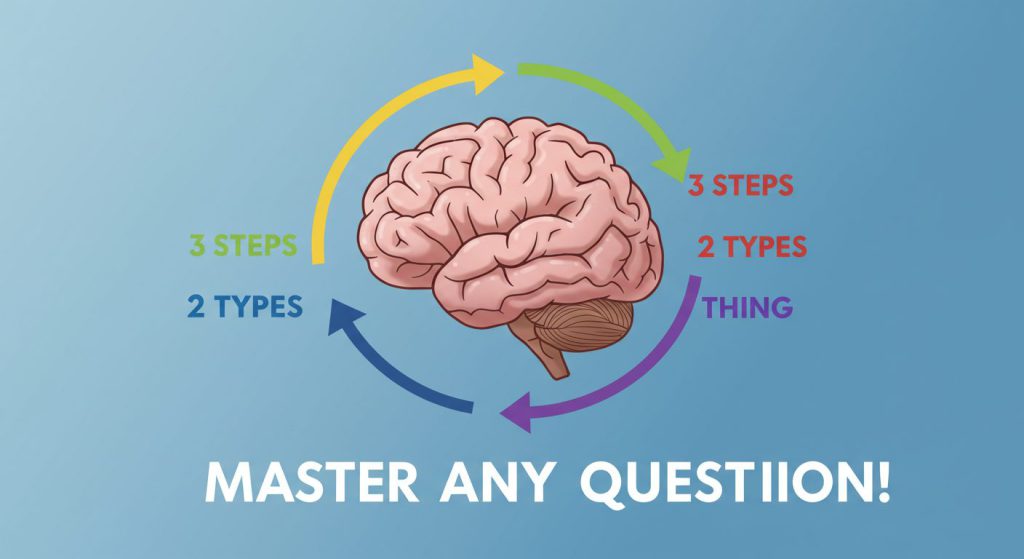Being in a situation like this can be demeaning. But what if your brain could process information and articulate ideas more efficiently, even when caught off guard? That is the premise of this article—unlocking the secret to effective and confident communication using a powerful framework. As a student, you will learn how to use these strategies to excel in conversations, presentations, and beyond. So, let’s transform the way you think about communication.
Why Frameworks Are Your Brain’s Best Friend
When put on the spot, your brain would likely go into panic mode. This usually results in stammering, muttering, or an unexpected spell of silence. “Frameworks,” which act much like mental guardrails, will come in handy in such scenarios. Frameworks organize your thoughts and prevent you from spiralling out of control. With a framework to rely on, responding to a professor’s question or discussing with peers becomes effortless. It’s like a cheat code for your mind that ensures you stay calm and collected.
Harnessing The Magic of the 3-2-1 Framework
The 3-2-1 framework is a memorable method for organizing busy thoughts. It consists of three steps, two types, and one thing. This framework can be employed in almost any context, ranging from class to ad hoc speeches. The advantage of this framework is its simplicity and flexibility which makes it useful in times of stress. Let us work through the framework and see how it can be useful.
Step 1: Select One Thing
The first step revolves around the use of “one thing” which is a clear and distinct idea pertaining to the topic. This gives direction to the answer and enables the brain to latch on to something. For instance, concerning study habits, you may choose, “The one thing is time-blocking increases my productivity,” a statement which best explains the general case. By choosing one idea, you conserve mental energy that would have resulted from trying to cover everything and instead, sailing by a single star.
Step 2: Highlight Two Types
Next, investigate “two types” which will deepen your response. This can be two categories, approaches, or even perspectives within a specific topic. As an example, for the study habit issue, you could mention, “There are two types of time-blocking: strict schedules for deep work and flexible blocks for creative work.” This shows the examiner that you can think in wide-ranging terms without going off on tangents and maintaining brevity.
Step 3: Outline Three Steps
Finally, share “three steps” so that your response is practical and actionable. This could be a process, tips, or stages related to the topic. Regarding time-blocking, you might say, “First, make a list of the tasks you need to complete. Second, give a time slot for each task. Third, follow the plan but be flexible to change.” This manner of organization adds reason to your thoughts and helps provide a complete answer that is well structured, like a mini-speech.

Practice Makes It Second Nature
The 3-2-1 technique is effective; however, it truly sparkles once put to practice. Experiment with it in low-pressure situations such as responding to questions during a study session or even discussing random topics with friends (like “pizza” or “movies”). It becomes more intuitive the more you work with it. Eventually, your brain will be trained to recognise this structure, and you will no longer need to be panicking in high-stress situations. Rather, you will sail through them as a communication expert. Wouldn’t it be amazing to effortlessly tackle any question as if it was thrown your way spontaneously?
Confidence is the Real Game-Changer
And now the best bit regarding the use of frameworks: they do so much more than arrange your thoughts – they also improve your confidence. When using a solid framework, there is less fear of being put on the spot. This allows for greater participation in conversations and speaking with assertiveness. Picture yourself being able to walk into a class discussion rather freely, confidently sharing your ideas without tension. That is the beauty of having adequate preparation.
Key Takeaways
- Frameworks prevent panic: They give your brain a clear path to follow, reducing rambling and blank moments.
- 3-2-1 is simple yet versatile: Use three steps, two types, and one thing to structure any response.
- One thing anchors you: Starting with a single point keeps your thoughts focused and clear.
- Two types add depth: Highlighting two perspectives shows you can think broadly without overloading.
- Three steps make it actionable: Offering a process makes your response practical and polished.
- Practice builds instinct: Regular use turns the framework into a natural habit.
- Confidence is the payoff: Frameworks make you feel ready, turning communication into an opportunity.
Your Turn to Shine
The 3-2-1 framework isn’t a one-size-fits-all solution, and that’s what makes it so exciting. You can tweak it to fit your style, whether you’re tackling academic discussions, job interviews, or casual debates with friends. The key is to start small, experiment, and find what works for you. Communication is a skill, not a talent—you don’t have to be born with it to excel. So, why not give it a try? Pick a topic, test the framework, and watch how it transforms the way you think and speak. You’ve got this, and the world is waiting to hear your voice.
